advertisements

Richard Nolle has been promoting the concept of the SuperMoon as one way to time earthquake activity. A SuperMoon happens during the Full or New Moon when the Moon is simultaneously at its closest approach to the earth during its monthly orbit. Generally, there are four to six Supermoons in a year, and occasionally, one of these Supermoons will be an extreme SuperMoon, meaning the Moon is at its closest approach to the earth in 18 years, or one Saros cycle. In his 2010 forecast, Nolle described the March 19, 2010 Full Moon as one of these rare extreme SuperMoons. He noted that this would likely bring a surge in extreme tides along the coast, accompanied by moderate to severe seismic activity, volcano eruptions, and tsunamis. The catastrophic 9.0 earthquake that hit Japan on March 11 fulfilled this prediction.
Other astrologers use eclipses to predict earthquakes. Celeste Teal, for example, has chronicled how earthquakes tend to happen when the transiting Nodes pass over the eclipse point. Using Eclipse or Ingress charts for various locations may help find potential endangered areas where an earthquake might strike. The path of total darkness during a Solar Eclipse is said to define a geographic band where spectacular events take place. Astrologers are individually trying a variety of techniques, and while any one may find some success, pooling the best and brightest under a government or philanthropic grant seems like a good idea. Personally, I have no claim to success for predicting earthquakes, but I do see some troubling patterns shaping up for 2012, and these are described below.
The 1700 Cascadia Earthquake
and the Ring of Fire
What I’ve noticed is that the megathrust Cascadia Earthquake of 1700 can be used as a foundation chart for tracking and forecasting the Pacific Rim’s great earthquakes. I don’t know why this should work, but I think of it as an inception or birth chart. All the degree areas common in the last century’s major quakes have direct ties to the 1700 Cascadia quake.
Astrologers may someday be of invaluable service in forecasting earthquakes. The central concerns in protecting humanity from the terrible devastation are location, magnitude, and time. Astrology, as the study of cycles, presumes to understand when events happen better than any other discipline, yet our track record for predicting earthquakes isn’t any better than what seismologists can do. As for discerning location and magnitude, these too are elusive goals among astrologers who monitor earthquake activity, though numerous theories and techniques abound.
San Francisco was hit by another strong earthquake during the 1989 World Series being held in that city (October 17, 1989; 5:04 pm). The 6.9 quake killed 63 people, left some 12,000 homeless, and caused an estimated $12 billion in damage. The horoscope for this quake shows Neptune at 9º Capricorn, so that it was opposing its own place during the 1906 quake. Uranus at 1º Capricorn was nearly at its return from the 1906 event. Saturn next to Neptune completed a triple conjunction in this degree area, which opposed Jupiter at 10º Cancer. Comparing these two earthquake charts shows the same two planets involved (Uranus and Neptune) and the same degree areas (around 7º-9º Cancer/Capricorn). In general, close outer planet aspects can be found in the charts of the most damaging earthquakes.
In looking at the horoscopes of the last century’s most devastating earthquakes, certain degrees and planetary combinations pop up more often that they should if mere chance were involved. For example, consider the Great San Francisco earthquake of 1906 (April 18, 1906; 5:12 am) and the fire that followed completely destroyed the entire city. A horoscope for this event features Uranus at the Midheaven opposite Neptune at the nadir at 8º Capricorn and 7º Cancer respectively.
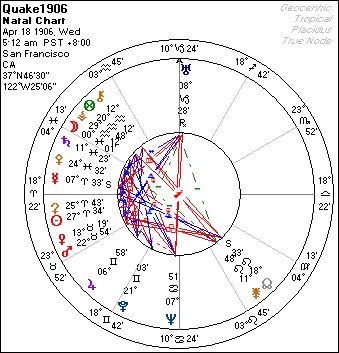
The 9.0 Japan earthquake (March 11, 2011; 2:46 pm; Sendai, Japan) has Jupiter opposite Saturn, with Jupiter at 10º Aries. Pluto at 7º Capricorn squares these two, and is in the same degree area as the two San Francisco earthquakes. What is eerily fascinating is to compare Japan’s earthquake with the May 22, 1960 quake that struck Chile. Known as the Valdivia or Great Chilean earthquake, this 9.5 incident was the most powerful earthquake ever recorded in human history. Around 6,000 people lost their lives, and the tsunami that followed devastated Hilo, Hawaii and was felt 6,000 miles away in Japan.
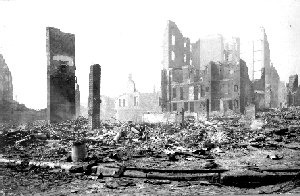
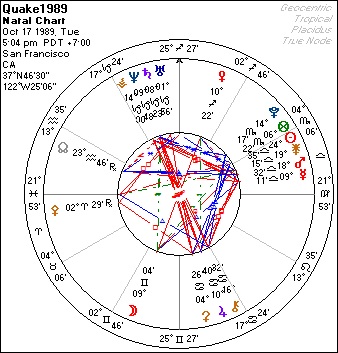
The horoscope for the Chile earthquake (May 22, 1960; 7:11 pm; set for 2:11 pm at the closest large Temuco) shows Saturn and Uranus forming an exact quincunx. Mars is in the - by now - familiar degree zone at 8º Aries, and participates in a Yod with Mercury and Neptune in the same degrees of their respective signs. Most interesting is that Chiron is located at 2º Pisces. In the Japan earthquake, Chiron is also at 2º Pisces. In both cases, Chiron is under heavy pressure from an outer planet. In Chile, Pluto opposed Chiron, while in Japan, Neptune was conjunct Chiron. These two powerful earthquakes happened precisely one Chiron cycle apart from each other.
Chiron’s position in these two quakes reveals another sensitive degree area in the zodiac, namely, the first few degrees of the mutable signs. The other sensitive degrees are 7º to 9º of the cardinal signs, which activate fault lines when transited by an outer planet. The earthquakes mentioned here are all located around the so-called Pacific Rim of Fire, which is described as the edge of the Pacific tectonic plate that spontaneously shifts to trigger earthquakes.
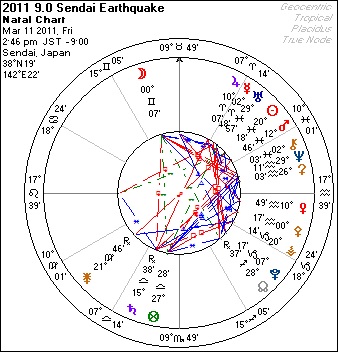
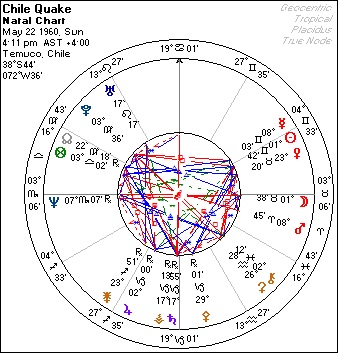
The most prominent placement is Uranus at the Midheaven at 7º Cancer, which as we have seen, is a critical degree in many 20th and 21st century earthquakes. Chiron and Neptune are angular as well, and oppose each other while squaring Uranus, making a dynamic, tension-filled T-square. The Sun at 7º Aquarius is also involved in a T-square: it opposes Pluto and squares Mars. Saturn at 1º Pisces is quincunx Chiron near the Ascendant, and tells us why the early degrees of mutable signs are particularly sensitive.
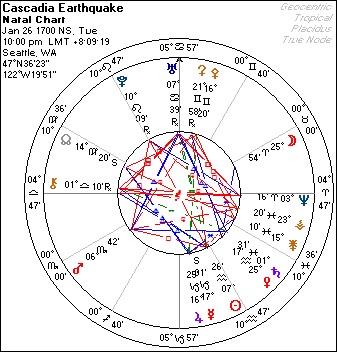
The 1985 quake has Jupiter at 7º Aquarius, right where the Sun is in the 1700 chart. The usual suspects are involved: Uranus in 1985 squares the 1700 quake’s lunar nodes with an orb of only 0º03’. Then, the fateful lunar nodes in the 1985 chart very closely square the 1700 position of Pluto (orb: 0º10’). There are other tight connections, but the point is, if the horoscope for the 1700 Cascadia Earthquake fits the horoscopes for modern day earthquakes, it can be used to make predictions. However, this seems to work just for earthquakes around the Pacific Rim.
As it turns out, the top two major astro-events for 2012 activate the 1700 Cascadia Earthquake chart. The Uranus-Pluto squares are right on the critical degrees of the cardinal signs. And, the May 20 Solar Eclipse takes place in the critical degree area of the mutable signs. If we look at the path of total darkness for this Solar Eclipse, it happens to coincide with the northern half of the Pacific Rim’s Ring of Fire. The path of totality starts in southeast China, then heads north through Japan and to the Aleutian Islands. Then it turns south, runs along the western coast of the U.S., and ends just north of Mexico City. This long arc might describe areas vulnerable to earthquakes, especially because it’s an exact overlay of the Ring of Fire, and because the concurrent Uranus-Pluto square is red flag for shifting fault lines.
There will be five SuperMoons in 2012 which may help pinpoint earthquake activity. The dates are April 6, May 6, June 4, November 14, and December 13.
April 6 looks important since Neptune is at 2º Pisces and is under stress from Mars and the lunar nodes.
It’s the same story for May 6, but now the Uranus-Pluto square is within 3º.
June 4 is highly important because the Full Moon on this date is a partial eclipse, and close to the all-important May 20 Solar Eclipse and the Venus occultation of June 5-6. Plus, the Uranus-Pluto square is only one degree apart and in the critical degree zone that is found in numerous modern-day earthquakes.
November 13 is the second Solar Eclipse of 2012, and the outer planets on this date are within orb of activating the 1700 Cascadia Earthquake chart. On December 13, the Yod between Jupiter, Saturn and Pluto is getting tight, plus Saturn is squaring the 1700 chart’s Aquarius Sun.
To sum up, the astrology of earthquakes is in its infancy, and remains an inexact science. However, from what we have seen, 2012 looks like a potentially devastating year. Consider the dates within a week of the SuperMoons, and for location, Japan and/or Mexico City seem entirely possible. Chile, Alaska, and the California or Northwest coastal regions are also in the danger zone.
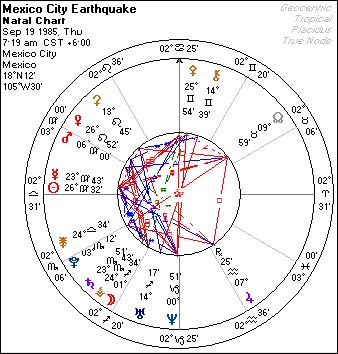
Seismologists know the approximate time of this immeasurably large earthquake because the resulting tsunami was recorded by Japanese scholars on the other side of the Pacific Ocean. The data for this chart is set for January 26, 1700 at 10:00 pm in Seattle, Washington.
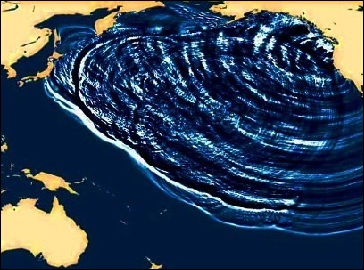
As an example of how well this horoscope correlates with modern day earthquakes, look at the catastrophic earthquake that struck Mexico City on September 19, 1985 (7:19 am). The number of deaths from this 8.1 magnitude quake range from 10,000 to 40,000, while the number of buildings that totally or partially collapsed was around 3,500.
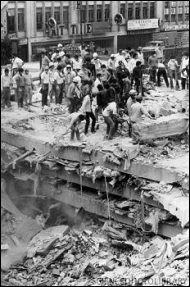
Many hospitals, schools, water pipes, roads and other critical infrastructure were ruined.
Astrologically, none of the critical degree areas are occupied in the horoscope for the Mexico City earthquake, if we’re considering the 6º-8º of cardinal signs or 1º-2º of the mutables. However, when comparing this chart to the Cascadia earthquake horoscope, some immediately obvious connections can be seen.

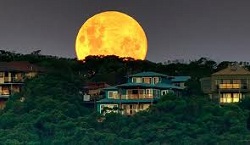
Can the horoscope for the 1700 Cascadia Earthquake be used to make predictions?

To read about the effects of Supermoons and eclipses on earthquake activity, visit earthquakes
NeptuneCafe presents
The Astrology of
Earthquakes in 2012
This article is an excerpt from the wide-ranging article "Forecast for 2012" by Michael O'Reilly, which was published in Dell Horoscope's 2012 Yearbook.
Here's another excerpt: Maya2012.
For more info, see Dell Horoscope.